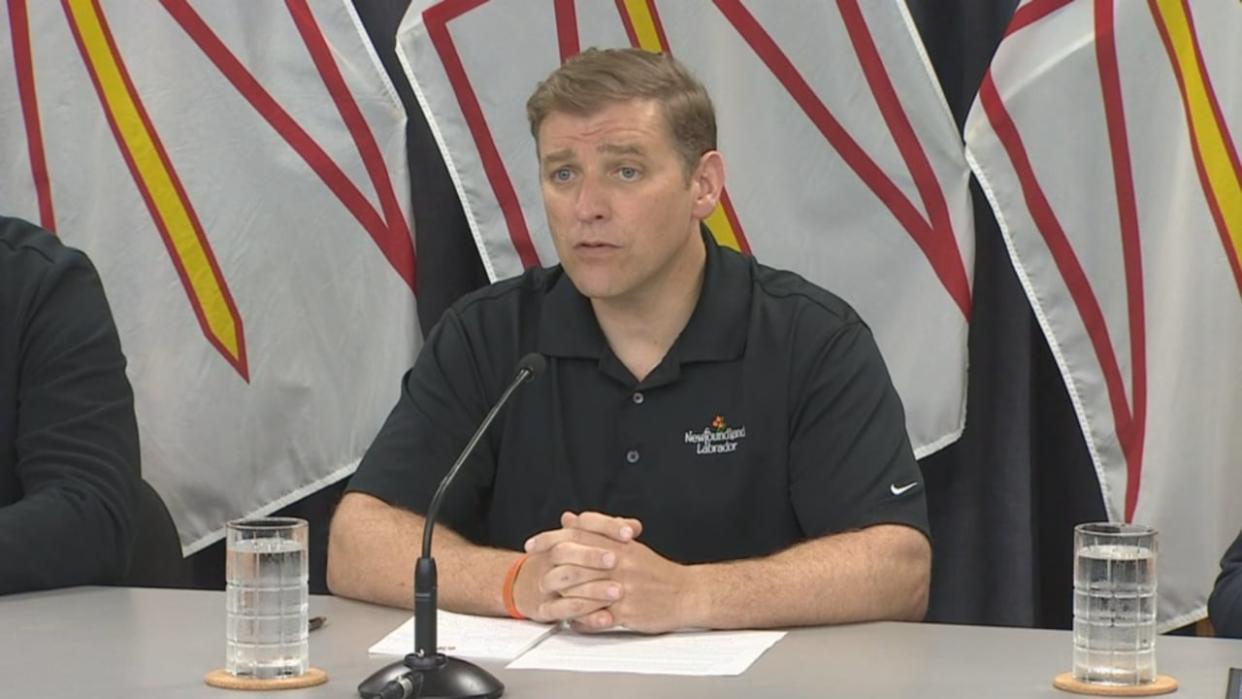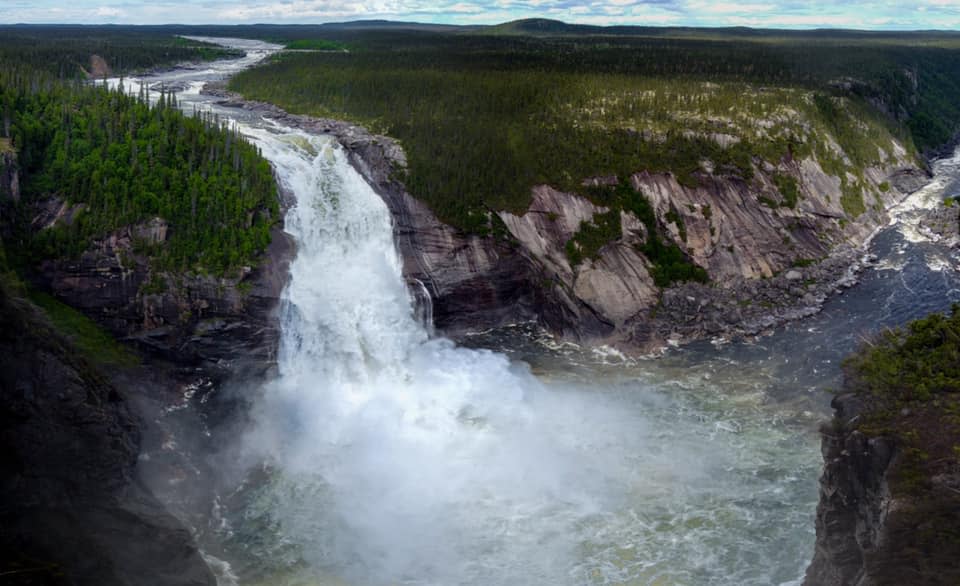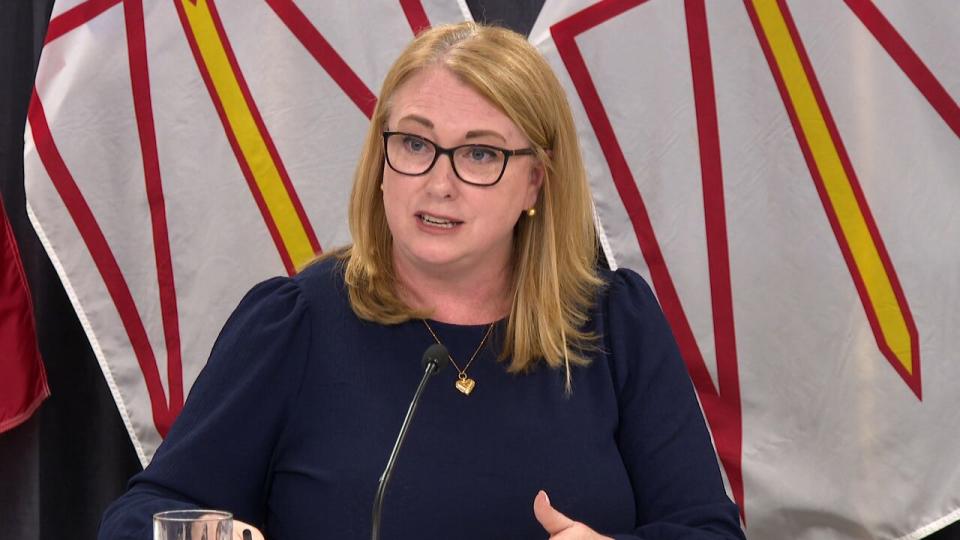Fire jumps river, prompting full evacuation of power-generating Churchill Falls

A growing wildfire just a few kilometres away from the power-generating community of Churchill Falls has crossed the central Labrador river that was serving as a barrier from the town.
At a news conference Tuesday, Newfoundland and Labrador Premier Andrew Furey said the fire has jumped the Churchill River but still remains about seven kilometres from the town, as of around 3 p.m. NT.
"The fire has jumped the river, which is what we were trying to prevent. It's what we were all hoping wouldn't happen," Furey said in St. John's. The fire grew from a Category 2 fire to a Category 4 fire between Tuesday morning and Tuesday afternoon, he added.
"So there is very much a heightened level of risk of fire propagation now on the community side of the river," he said.
"We'll continue to provide mitigation efforts on both sides of the river, and we hope that that will contain the fire."
The change in the fire has prompted a full evacuation of Churchill Falls in a phased approach.
Between 80 and 100 people remained in the community to operate the town's power plant, including operations and site services, fire services and clearing work for a fire break currently under construction.
Newfoundland and Labrador Hydro told CBC News that workers deemed essential will be the last to leave the town, but officials aren't sure how long that will take.
Much of the town's population of around 750 people was evacuated last Wednesday.
Jamie Chippett, deputy minister of the Department of Fisheries, Forestry, and Agriculture, said attention now shifts to fighting the leading edge of the fire — provided it doesn't get worse.
"If we can keep the fire from getting to Level 5 or a Level 6, then I think we would be working hard, similar to what we've been doing before," he said.
"If we get to a five or a six in classification, it's really at the limit or beyond the limit of bombers being able to be in the air."
'Planning for this eventuality'
Newfoundland and Labrador Hydro CEO Jennifer Williams said workers have been preparing for changes to the status quo.
"We were planning for this eventuality," she said. "That is why we made adjustments at the plant last night."

As a precautionary measure, Hydro had begun releasing water at its Churchill Falls power plant Monday night in case the Crown corporation needed to remove even more staff from an evacuated community already under serious fire threat.
"We will definitely continue to take direction from the officials, but in our planning scenarios we are planning for hotel rooms, we are planning for charter flights … arranged and on standby," Williams told reporters.
Hydro had also already started reducing energy loads in anticipation of further evacuations. The release of water will also help beleaguered crews who face another hot, rainless day while trying to control the fire.
On Monday night, the Crown corporation announced it was doing a controlled water release from the upper Churchill reservoir at the Jacopie Spillway for an unknown amount of time.

In the event the plant goes to remote operations, not as much water will go through the turbines. Spilling water prevents water in the reservoir from rising too high.
The statement said water management is a part of protecting the plant's assets.
Williams said the plant is operating at a much lower operating load than usual. N.L. Hydro has notified customers that they should keep their energy usage around the same levels for the time being to keep things as close to the status quo.
Crews have also been working to give the plant, which was designed in the late 1960s, a limited ability to be controlled remotely.
As of Tuesday morning, current Churchill Falls generation was at 1,462 megawatts, according to Hydro's website. Earlier this week, that rate was 3,000 megawatts.
The change has no impact for Hydro customers, Williams said, and plans are in the works to ensure there will be no impact if output drops further.
As a safety measure, the N.L. Hydro statement advised people to avoid the Jacopie and Whitefish spillways, the Churchill River bed downstream of the spillway, the Churchill River walking trail, as well as the east and west forebay water storage areas north of the town.
It added that Tuesday will be a "critical" day to fight the out-of-control fire that is on the doorstep of one of North America's largest power plants.
Provincial forest fire duty officer Mark Lawlor said Tuesday that pumping additional water into the river valley will help firefighting efforts because it increases the region's humidity.
"Any moisture in the area is a help," he told CBC News.
The additional water would also increase the width of the river, thereby covering fuel that the fire could feed on, Lawlor added.
According to the Newfoundland and Labrador government's active fire dashboard, there are nine fires Tuesday in Labrador and one in Newfoundland, which is now under control.
Download our free CBC News app to sign up for push alerts for CBC Newfoundland and Labrador. Click here to visit our landing page.

 Yahoo News
Yahoo News 
